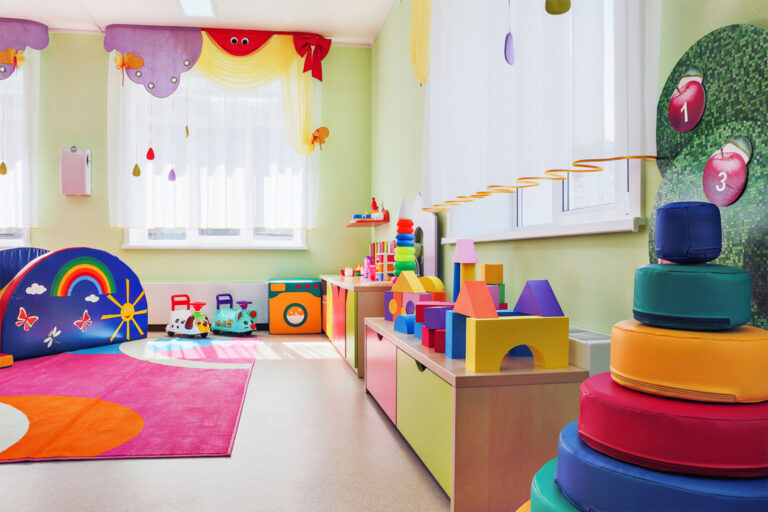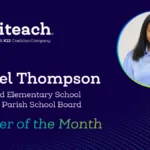Stepping into your first classroom as a new teacher is very exciting. But it can also be a bit scary, especially when it comes to classroom management. You want to create a positive classroom environment. In this space, students feel safe, respected, and enthusiastic to learn. This is the key to a great school year. Every classroom is different, but new teachers can use some important classroom management strategies from the start. These strategies help set up a year of fun and effective learning.
Understanding the Foundations of Classroom Management
Effective classroom management is not just about having strict rules. It is about building a classroom culture where learning can grow. This includes setting clear expectations and creating a supportive environment. It’s also important to build positive relationships with your students and encourage them to connect with each other.
You don’t have to do this alone. Reach out to experienced teachers and mentors for helpful advice and support.
Creating a strong classroom culture takes time. It will change as the school year goes on. Don’t hesitate to change your approaches as you learn more about your students. Find out what works best for your teaching style and the feel of your classroom.
The Importance of Establishing Clear Rules
Just like a game needs rules to be fair, classrooms need clear expectations for behavior and schoolwork. From middle school to high school, these expectations help students see what they need to do. This avoids confusion that can cause problems in class.
When creating classroom expectations, include your students! Let them share their ideas for rules and consequences. This teamwork lets them feel in charge of their classroom. It also helps them become responsible and accountable.
Show the classroom rules where everyone can see them and go over them often. It’s important to repeat and support these expectations during the year, especially after long breaks or big changes.
Creating a Positive Learning Environment
A good learning place is based on respect, trust, and feeling that you belong. When students feel valued and safe, they are more likely to take risks in their learning. This helps them behave better and love to learn.
It’s very important to build good relationships with your students. Greet them at the door every day. Learn their names fast. Show that you care about their lives. Celebrate successes, big or small, to create a supportive classroom culture.
Always show the behavior you want from your students. Face tough situations with patience, empathy, and a positive spirit.
Preparing Your Classroom: A Beginner’s Guide
As a new teacher, the beginning of the school year is a great time to create a classroom that feels both useful and inviting. Consider how you arrange the seats, where you place learning tools, and how you decorate the walls. All these things help build a positive classroom culture.
Visual aids can be very helpful! Showing schedules, calendars, helpful charts, and student work not only makes the classroom look better but also gives students useful reminders and references throughout the school year.
Essential Resources and Tools for Effective Management
Just like you choose textbooks and learning tools carefully, it’s important to have effective classroom management strategies. There is no single way to manage a classroom. You need to adjust your methods based on your teaching style and the specific needs of your students.
Start by looking into different models and strategies for classroom management. Try out different techniques to see what works best for you and your students. Don’t be afraid to ask advice from others who have more experience, like colleagues or mentors, or to take part in professional development.
Always remember that classroom management strategies are most useful when you apply them consistently and fairly. Make sure to set clear rules and communicate them well. Stick to these rules all through the school year.
Setting Up Your Physical Classroom Space
The way you set up your classroom can greatly affect how students act and work. From flexible seating to smartly placed learning areas, think about how your classroom layout can help you manage the class better.
Here are some tips:
- Create clear pathways: Make sure students can move around without causing problems.
- Minimize distractions: Arrange desks or learning areas in a way that keeps distractions low and helps students focus.
- Establish zones: Make specific areas for different activities, like reading spots, teamwork places, or tech areas.
- Consider flexible seating: Look into options like standing desks, wobble chairs, or beanbag chairs to meet students’ needs and give them choices.
A well-organized and carefully planned classroom helps build a positive classroom culture and allows for smooth transitions between activities.
Step-by-Step Guide to Implementing Management Strategies
Implementing good classroom management strategies takes time and planning. It is important to do this consistently and be open to change. Here is a simple guide to help you create a positive and productive learning space. This will help keep students engaged and reduce disruptive behavior.
Consistency matters for successful classroom management! By using these strategies regularly and adjusting them when necessary, you will build a learning environment where both you and your students can do well.
Step 1: Develop a Classroom Management Plan
A good classroom management plan is your guide to doing well. It should explain your teaching beliefs, rules, what you expect, procedures, and how to handle disruptive behavior. A detailed plan helps both you and your students understand things better.
When you create your plan, make sure it fits with your school’s rules and procedures. Work together with other teachers to get their ideas and tips. Stay open to changes. Your classroom management plan should change as you discover what works best for you and your students.
Also, think about the different needs of your students. Change your strategies to support different ways of learning, cultural backgrounds, and any special needs in your classroom.
Step 2: Communicate Expectations Clearly from Day One
Setting a good tone on the first day of school is very important. It helps to create a positive learning space. You should clearly explain the classroom expectations, rules, and procedures to your students. Good communication helps to avoid confusion and keeps everyone focused on success.
Think about making a fun presentation or activity to share your classroom expectations. This way, students can join in and enjoy building the classroom culture together.
Remember to send a copy of your expectations home! Ask parents to go over them with their child and then have them sign a form to show they understand. This way, everyone will be on the same page.
Step 3: Use Positive Reinforcement to Encourage Good Behavior
Positive reinforcement is a great way to encourage the behaviors you want and to create good relationships with your students. Recognize and reward students when they follow classroom rules, show positive behavior, and have a growth mindset.
Using a reward system in the classroom can really motivate everyone! You can start with something simple like giving points to the whole class or using individual behavior charts. Celebrate all successes, whether big or small.
Keep in mind that positive reinforcement doesn’t always mean giving things. A sincere compliment, a call home that gives praise, or just noticing a student’s hard work can be very helpful in creating a positive classroom climate.
Step 4: Addressing Disruptions Promptly and Effectively
Even in well-run classrooms, disruptions can happen. Having a plan to deal with disruptive behavior quickly and fairly will help you keep more instructional time and stop small problems from growing.
You can use non-verbal cues like being close to the student, using body language, and making eye contact. These tools can help redirect minor disruptions without stopping the lesson. For bigger disruptions, have clear consequences and steps to take.
When you deal with disruptive behavior, stay calm and respectful. Do not humiliate them or get into power struggles. Instead, focus on guiding their behavior and supporting positive choices.
Tailoring Strategies to Meet Individual Needs
Just like you change your teaching plans to fit the different ways your students learn, it’s important to adjust your classroom management methods too. What helps one student may not help another, so be ready to change your way of doing things.
Pay attention to how your students act and learn. Think about their backgrounds, what they like, and any problems they might have. By creating strong connections with your students, you can better understand what they need and help them more effectively.
Adapting Techniques for Diverse Learning Styles
- Recognize that students have different learning needs and preferences. Some students do well in structured settings, while others need more freedom. Changing your teaching style and classroom management is important for making an inclusive space for everyone.
- Give students choices when you can. Let them show what they have learned in different ways, like through presentations, projects, or written work. Offer different seating options that suit their sensory needs and preferences.
- Using visual aids, graphic organizers, and hands-on activities can really help engage visual, kinesthetic, and tactile learners. Presenting information in various formats helps all students understand and remember better.
Managing Challenges with Special Needs Students
Working with special needs students needs a kind and personal approach. You should work together with special education teachers, support staff, and parents to create the right plans and help that support the student. This will help them succeed and reduce disruptions during learning time.
Good communication and active listening are very important when helping special needs students. Take some time to learn about their specific challenges, things that upset them, and how they prefer to talk. Setting up routines and using visual schedules can help calm them down and make things more predictable.
Always remember that being patient, showing empathy, and being flexible with your methods is key to supporting students well. By making a caring and inclusive classroom, you allow all students to be their best.
Leveraging Technology for Classroom Management
In today’s digital world, using educational technology in your classroom can help engage students more. It can also make routines easier and create a better learning space. There are many digital tools for communication and interactive platforms for assignments and tests that can help with classroom management.
When choosing technology tools, pick those that match your teaching style and your goals for the curriculum. Look into different options, try free trials, and ask colleagues for advice. They might share their experiences with using technology in their classrooms.
Digital Tools That Aid in Keeping Students Engaged
Digital tools can change your classroom into a fun and active learning space. With things like game-based learning platforms, interactive whiteboards, and student response systems, technology gives us creative ways to share information. It can help us check understanding and build a more active and exciting learning environment.
Educational games and simulations make learning enjoyable and engaging. They are especially helpful for students who learn better in a gamified setting. These tools give quick feedback and let students learn at their own speed. This helps them feel more in control of their learning.
If used well, digital tools can help create a positive classroom environment. They can provide chances for teamwork, creativity, and personalized learning experiences.
How to Integrate EdTech into Your Management Plan
Effectively integrating edtech into your classroom management strategies involves thoughtful planning, clear communication, and a willingness to adapt. Begin by identifying specific areas where technology can enhance your existing strategies.
Train your students on the proper use of digital tools and establish clear expectations for online behavior and digital citizenship. Ensure that all students have equitable access to technology and provide support for those who may need additional assistance.
Here’s a sample table outlining how different edtech tools can be integrated with your classroom strategies:
| EdTech Tool | Classroom Management Strategy | Description |
| Learning Platforms | Communication & Collaboration | Use platforms like Google Classroom or Canvas to post announcements, share assignments, facilitate discussions, and provide feedback. |
| Timer Apps | Time Management | Employ timer apps during independent work time, transitions, or group activities to promote focus and accountability. |
| Classroom Management Software | Behavior Management | Utilize classroom management software to track behavior, assign rewards, and communicate with parents. |
Conclusion
In conclusion, mastering classroom management is important for new teachers. It helps them create a good learning environment. By setting clear rules and encouraging a positive atmosphere, teachers can support student growth. Using technology can make lessons more engaging. Keep in mind that managing a classroom is a learning process. It changes as teachers gain experience and understand student needs. Be open to new ideas, flexible, and focus on helping students succeed. Stay active, welcome feedback, and work hard to build a space where all students can do well. Happy teaching!




